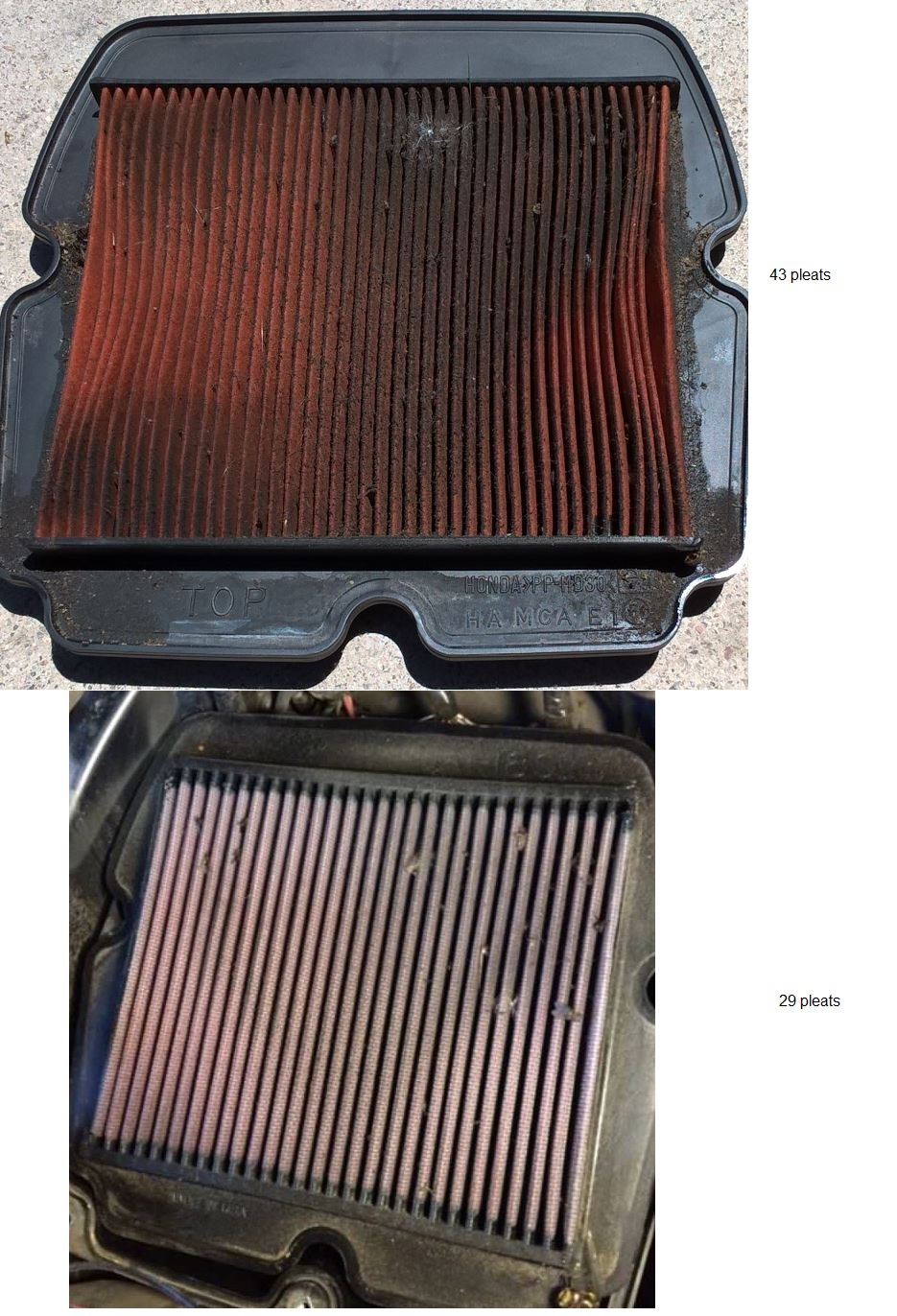I hesitated to post that test because in the past, we had a member who seemed personally offended by any criticism of K&N. However, I thought that anyone thinking about switching might be interested as it shows why manufacturers don't install 'serviceable' oiled media filters on their vehicles.
The internet is full of K&N filter complaints. Most focus on two issues: damage to MAF sensors (which our GL1800s don't use) from the filter oil, and visual evidence in the intake tract that excess dirt is passing through. But those are mostly anecdotal stories. If you want precise data you often need to get out of the real world and into a controlled environment. To measure horsepower you connect to a dyno. To determine the condition of your oil you don't look at color of the dipstick, you send a sample to a lab.
That's what the 'Spicer' test did. Rather than analyze filters pulled from an engine, they ran an ISO 5011 test on 9 competing filters using a machine that flowed test dust (a specific mix of particle sizes) at a constant rate until the filter clogged. Clogging was defined as restriction causing a pressure drop of 10 IN-H2O.
The results showed a clear pattern. Two oiled filters (K&N and Uni) were compared with 7 traditional paper/syntyetic filters, like Purolator, Wix, and AC/Delco. The best filter ran 60 minutes and let .4 grams of dust through. The worst (K&N) only ran for 24 minutes and let 7 grams through. So the best filter passed .0067 grams of dust per minute, compared to .29 grams for the K&N. That's a ratio of over 43:1!
It's easy to see why more dirt gets through the K&N. It has only 29 pleats, while the Honda filter has 43, or 48% more. With significantly less surface area the K&N can only flow more air by having larger pores. And larger pores mean larger dust particles.
The less efficient filtration of oiled media filters is fairly well know. But the big surprise to me was that they clog up faster, which is possibly due to having less surface area. I used K&N and another oiled filter in the past. I didn't like the clean/dry/re-oil routine, but I believed the hype that they lasted longer, and considered one for the F6B since the filter change is such a chore. Now that I know conventional filters last longer (and filter better) there's no way I'll install a brand that needs to be serviced MORE frequently.









 Reply With Quote
Reply With Quote